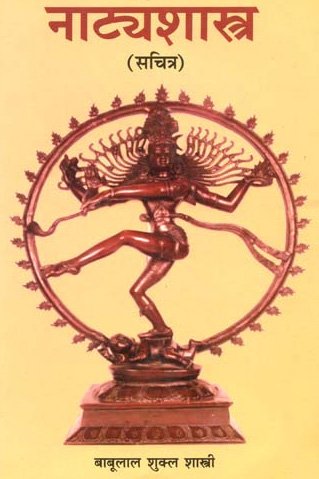Mishrakeshi, Miśrakeśi, Miśrakeśī, Miśrakeṣī: 10 definitions
Introduction:
Mishrakeshi means something in Hinduism, Sanskrit, Jainism, Prakrit. If you want to know the exact meaning, history, etymology or English translation of this term then check out the descriptions on this page. Add your comment or reference to a book if you want to contribute to this summary article.
The Sanskrit terms Miśrakeśi and Miśrakeśī and Miśrakeṣī can be transliterated into English as Misrakesi or Mishrakeshi, using the IAST transliteration scheme (?).
In Hinduism
Natyashastra (theatrics and dramaturgy)
Source: Wisdom Library: Nāṭya-śāstraMiśrakeśi (मिश्रकेशि) is the name of an Apsara created for the sake of a type of dramatic perfomance. Acording to the Nāṭyaśāstra 1.46-51, after Brahmā asked Bharata for materials necessary for the Graceful Style (kaiśikī: a type of performance, or prayoga), Bharata answered “This Style cannot be practised properly by men except with the help of women”. Therefore, Brahmā created with his mind several apsaras (celestial nymphs), such as Miśrakeśi, who were skillful in embellishing the drama.

Natyashastra (नाट्यशास्त्र, nāṭyaśāstra) refers to both the ancient Indian tradition (shastra) of performing arts, (natya—theatrics, drama, dance, music), as well as the name of a Sanskrit work dealing with these subjects. It also teaches the rules for composing Dramatic plays (nataka), construction and performance of Theater, and Poetic works (kavya).
Purana and Itihasa (epic history)
Source: archive.org: Puranic Encyclopedia1) Miśrakeśī (मिश्रकेशी).—A celestial woman. She was the beautiful daughter born to Pradhā wife of Kaśyapaprajāpati. Raudrāśva son of Pūru married Miśrakeśī and begot a son named Anvagbhānu and nine sons more who were all good archers. When once Arjuna went to Indraloka Miśrakeśī gave a dance performance in his honour. (Chapter 65, Ādi Parva and Chapter 43, Vana Parva).
2) Miśrakeśī (मिश्रकेशी).—Wife of King Vatsaka, brother of Vasudeva. (9th Skandha, Bhāgavata, and Chapter 59, Ādi Parva).
Source: Cologne Digital Sanskrit Dictionaries: The Purana IndexMiśrakeśī (मिश्रकेशी).—An Apsaras and wife of Vatsaka; in the sabhā of Hiraṇyakaśipu.*
- * Bhāgavata-purāṇa IX. 24. 43; Brahmāṇḍa-purāṇa III. 7. 6; Matsya-purāṇa 161. 75; Vāyu-purāṇa 69. 5.
Miśrakeṣī (मिश्रकेषी) refers to the name of a Lady mentioned in the Mahābhārata (cf. I.59.48, I.65). Note: The Mahābhārata (mentioning Miśrakeṣī) is a Sanskrit epic poem consisting of 100,000 ślokas (metrical verses) and is over 2000 years old.

The Purana (पुराण, purāṇas) refers to Sanskrit literature preserving ancient India’s vast cultural history, including historical legends, religious ceremonies, various arts and sciences. The eighteen mahapuranas total over 400,000 shlokas (metrical couplets) and date to at least several centuries BCE.
In Jainism
General definition (in Jainism)
Source: archive.org: TrisastisalakapurusacaritraMiśrakeśī (मिश्रकेशी) refers to one of the eight Dikkumārīs living on the northern Rucaka mountains (in the Rucakadvīpa continent), according to chapter 1.2 [ādīśvara-caritra] of Hemacandra’s 11th century Triṣaṣṭiśalākāpuruṣacaritra: an ancient Sanskrit epic poem narrating the history and legends of sixty-three illustrious persons in Jainism.
Accordingly,
“[...] Eight Dikkumārīs [viz., Miśrakeśī] from the northern Rucaka Mountains came quickly by means of the Ābhiyogika-gods who had become chariots like the wind (in speed). After bowing to the Jina and to his mother and announcing their purpose as before, they stood on the left holding chauris, singing.[...].”.
Note: In the continent Rucakadvīpa is a circular mountain-ranges Rucaka. On this in the four directions are 4 temples, and on both sides of each temple are 4 mountain peaks, making 8 peaks in each direction. Each peak is inhabited by a Dikkumārī [viz., Miśrakeśī].—(cf. ‘Die Kosmographie der Inder’ pp. 257f).

Jainism is an Indian religion of Dharma whose doctrine revolves around harmlessness (ahimsa) towards every living being. The two major branches (Digambara and Svetambara) of Jainism stimulate self-control (or, shramana, ‘self-reliance’) and spiritual development through a path of peace for the soul to progess to the ultimate goal.
Languages of India and abroad
Sanskrit dictionary
Source: Cologne Digital Sanskrit Dictionaries: Edgerton Buddhist Hybrid Sanskrit DictionaryMiśrakeśī (मिश्रकेशी).—name of a devakumārikā in the western quarter: Mahāvastu iii.308.8 = Lalitavistara 390.5.
Source: Cologne Digital Sanskrit Dictionaries: Cappeller Sanskrit-English DictionaryMiśrakeśī (मिश्रकेशी).—[feminine] [Name] of an Apsaras.
Source: Cologne Digital Sanskrit Dictionaries: Monier-Williams Sanskrit-English DictionaryMiśrakeśī (मिश्रकेशी):—[=miśra-keśī] [from miśra > miśr] f. Name of an Apsaras, [Mahābhārata; Kāvya literature; Purāṇa]
[Sanskrit to German]
Sanskrit, also spelled संस्कृतम् (saṃskṛtam), is an ancient language of India commonly seen as the grandmother of the Indo-European language family (even English!). Closely allied with Prakrit and Pali, Sanskrit is more exhaustive in both grammar and terms and has the most extensive collection of literature in the world, greatly surpassing its sister-languages Greek and Latin.
See also (Relevant definitions)
Partial matches: Mishra, Keshi, Keci.
Full-text (+1): Tejeyu, Apsaras, Jaleyu, Satyeyu, Krikaneyu, Dharmayu, Sthandileyu, Vidyutparna, Kaksheyu, Vatsaka, Puruvamsha, Vaneyu, Tilottama, Kesa, Riceyu, Raudrashva, Anadhrishti, Kesini, Vrika, Aruna.
Relevant text
Search found 14 books and stories containing Mishrakeshi, Mishra-keshi, Miśra-keśī, Misra-kesi, Miśrakeśi, Miśrakeśī, Misrakesi, Miśrakeṣī; (plurals include: Mishrakeshis, keshis, keśīs, kesis, Miśrakeśis, Miśrakeśīs, Misrakesis, Miśrakeṣīs). You can also click to the full overview containing English textual excerpts. Below are direct links for the most relevant articles:
Puranic encyclopaedia (by Vettam Mani)
Harivamsha Purana (by Manmatha Nath Dutt)
Chapter 45 - Vishnu’s Birth As a dwarf < [Book 3 - Bhavishya Parva]
Chapter 90 - The Sport of the Yadus (continued) < [Book 2 - Vishnu Parva]
Mahabharata (English) (by Kisari Mohan Ganguli)
Section XLIII < [Indralokagamana Parva]
Section X < [Lokapala Sabhakhayana Parva]
Section LXV < [Sambhava Parva]
Ramayana of Valmiki (by Hari Prasad Shastri)
Chapter 91 - Sage Bharadvaja entertains the whole army < [Book 2 - Ayodhya-kanda]
List of Mahabharata people and places (by Laxman Burdak)
The Brahma Purana (by G. P. Bhatt)